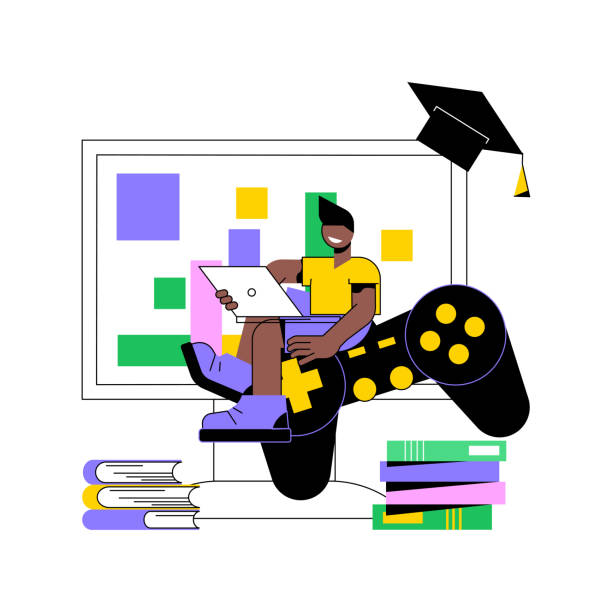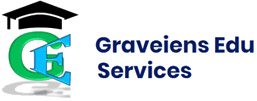Several key factors are driving the EdTech companies in India. They are rapid digitalization, increasing internet penetration, and a government actively promoting digital literacy.
These trends align with India’s government initiatives like the Digital India program, promoting digital literacy and creating a digitally empowered society. The use of the latest education technology, or EdTech, in school settings, has increased dramatically worldwide to support teaching and learning. It enhances students’ learning outcomes.
More recent trends in the education system have been towards personalized, adaptive, and student-centered learning models, incorporating intelligent classrooms, digitized learning content and pre-recorded teacher videos.
However, because of this, the future of EdTech companies in India seems to be filled with opportunities and transformations. Therefore, in the next part of the article, we will delve deep into the future of EdTech.
Top 5 Upcoming EdTech Trends in India: How Edtech Companies in India Work
According to many experts, several trends will dominate the EdTech landscape in India in the near future. Here, we mention a few of the major ones:
1. Immersive Virtual Reality (VR) and Augmented Reality (AR)
These immersive technologies in online education are bringing about a sea change. AR/VR Applications developed by EdTech companies in India bring classrooms to life. Learners can delve further into topics they’ve only read about in books, from historical events to sophisticated scientific experiments to real-world field trips.
Also, this method of teaching and learning is fun and effective. Augmented, Virtual, and Extended Reality technologies will empower education providers to deliver immersive experiences with different levels of abstraction.
The quantum leap will add to the thrill of navigating virtual terrains among students and improve engagement. Additionally, participation in simulated environments will create unique learning journeys.
The Potential of AR and VR in Education:
Besides being used in corporate sectors and other professional fields, AR and VR play a vital role in developing an efficient learning experience.
Interactive learning: AR and VR provide hands-on learning experiences that can help students better grasp complex concepts.
Improved engagement: Immersive technologies can make learning more enjoyable and captivating, increasing students’ learning motivation.

Real-world application: AR and VR can simulate real-life situations. Thus, it prepares students for future careers and practical applications of their knowledge.
2. Artificial Intelligence and Chatbots
Artificial intelligence (AI) is improving online education in several ways. Chatbots provide students with immediate support by responding to inquiries and offering advice. AI also aids teachers by keeping tabs on kids and providing feedback on how they may improve.
Technologies such as NLP, machine learning, and LLMs will facilitate the creation of hyper-personalized digital spaces. The evolution of assistive technologies will help create learner-centric virtual and real-life classrooms with flexible instruction techniques to address the unique learning needs of every individual.
AI adoption is one of the most actively ongoing processes in the education industry. So, it is time to go beyond predictive AI. EdTech companies in India must prepare to incorporate generative and super AI for the best educational results.
How ChatGPT and AI Can Improve Education:
Numerous studies and theories are showcasing the negative impacts of ChatGPT on students. However, it is not as bad as portrayed often. Let’s learn more about it.
Customized learning: ChatGPT can be trained to provide domain-specific learning, catering to individual student’s needs and interests.
Enhanced research skills: ChatGPT can help students access and analyze up-to-date information on research topics, improving their critical thinking abilities.
Support for teachers: AI technologies like ChatGPT can automate routine tasks and create personalized assessments, allowing teachers to focus on their students’ needs.
3. Gamification from EdTech Companies in India
Gamification of different subjects can be a fun and interactive way of learning introduced to students. Games are something people from different age groups like and find fun. Ready-made games which are interactive and fun can make learning easier for students.
The games can not only be integrated with fun learning sessions but also be used to have fun quizzes. Thus, they will increase pupils’ participation in the classroom. Moreover, students will be more attentive to what is being taught in the class.
Gamification of learning and education will be much more fun and faster to grasp the students and will grow in the markets and the concept of education. Gamification has proven to have improved learning outcomes when combined with reading.
Benefits of Gamification:
Gamification and interactive learning techniques are introduced to make education more engaging and fun.
Also, it enables students to participate in interactive activities, challenges, and simulations by integrating game elements into content. This approach fosters active learning, problem-solving skills, and collaboration among students.

Moreover, EdTech startups are transforming classrooms into dynamic, immersive learning environments through gamified platforms.
4. Micro-credentials and Skill-based Education
In response to rapidly evolving workplace needs and lifelong reskilling demands, micro-credentials and skills-based programs are rising in popularity. In 2024, micro-credentials and skill-based education will dominate the education landscape.
Short-term, targeted learning modules will gain prominence as industries prioritize specific skills. Micro-credentials offer agility, allowing learners to acquire and showcase expertise quickly. This trend reflects a shift towards personalized, practical learning, aligning education with rapidly evolving workforce demands.
Key Features of Microlearning:
Nowadays, many EdTech companies provide access to microlearning with tech-advanced tools and accessories. Let’s look at the major features of microlearning.
Short lessons: Microlearning content typically takes 5-15 minutes to complete, making it easy to fit into busy schedules.
Focused topics: Each microlearning lesson covers a single subject, allowing students to concentrate on specific areas of interest.
Flexibility: Microlearning resources can be used independently or as part of a larger learning program, offering versatility to both students and educators.
Top Skills in Demand:
While discussing skill-based education, learning about the top skills in demand is essential. So, here they are. Top skills in demand include management, communication, customer service, leadership, sales, project management, and research. Also, skills like analytical skills, marketing, and teamwork are popular in professional sectors.
5. Hybrid Education Becomes the New Normal
The COVID-19 pandemic accelerated the adoption of online learning, with many students and professionals turning to digital platforms to continue their education.
As the world adapts to new technologies, hybrid education – a blend of online and offline learning – is predicted to become the norm. This approach allows for a more personalized learning experience, combining the convenience of online resources with the social interaction of in-person classes.
Hybrid Learning pairs classroom and online learning to create a comprehensive and well-rounded educational experience. The aim is to empower the student with in-person support and the freedom to learn at their style or pace online.
Also, a hybrid learning model allows students to spend half their time attending campus classes, while the other half streamed lectures online. By making the system flexible, hybrid learning makes access to education easy for a diaspora of students, irrespective of their geographic, demographic, or psychographic backgrounds.
Advantages of Hybrid Education:

Enhanced accessibility: Hybrid education makes learning more accessible to a diverse range of learners, including those in remote areas or with limited resources.
Increased engagement: The combination of online and offline learning keeps students engaged. Moreover, it offers a variety of learning experiences.
Versatility: Hybrid education caters to different learning styles and preferences, allowing students to tailor their learning journey to their needs.
Final Words
To sum up, the EdTech companies in India are transforming learning and teaching experiences, overcoming geographical and economic barriers. In addition, they promise a future where quality education is accessible to all.
However, addressing existing challenges, like the digital divide and lack of digital literacy, is crucial to harness its full potential. Through collective effort from the government, educators, parents, and EdTech companies, a bright future awaits Indian education.
What’s your view on this? Share in the comments below!



Comments 0